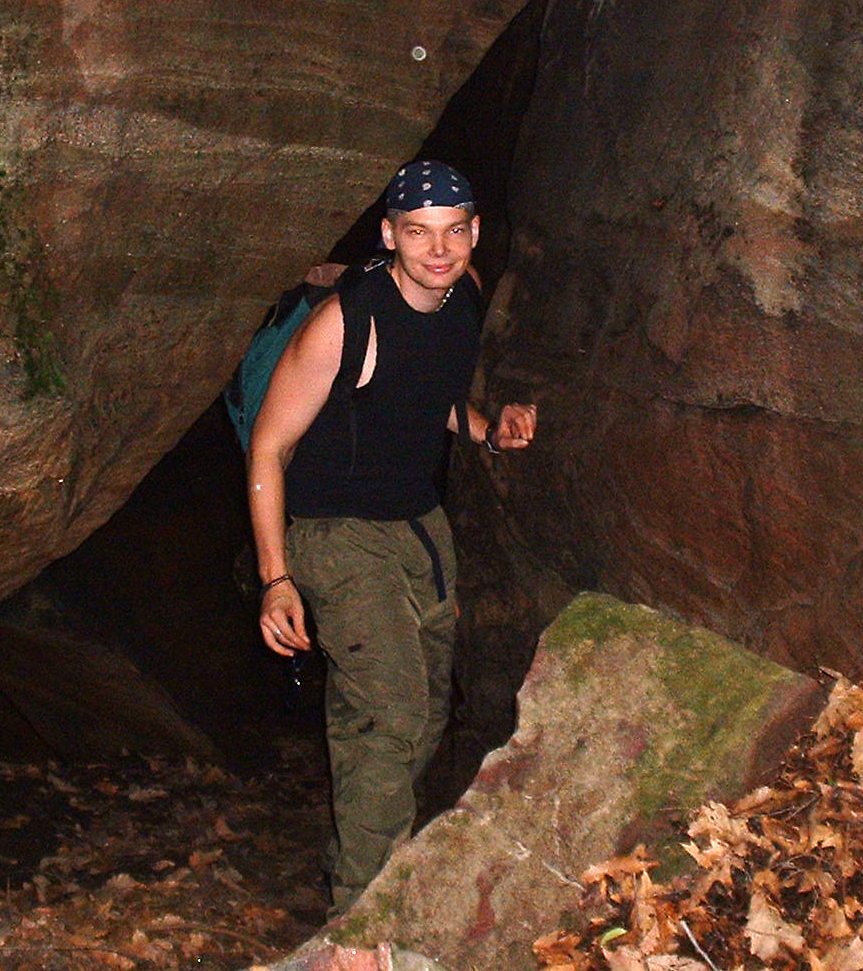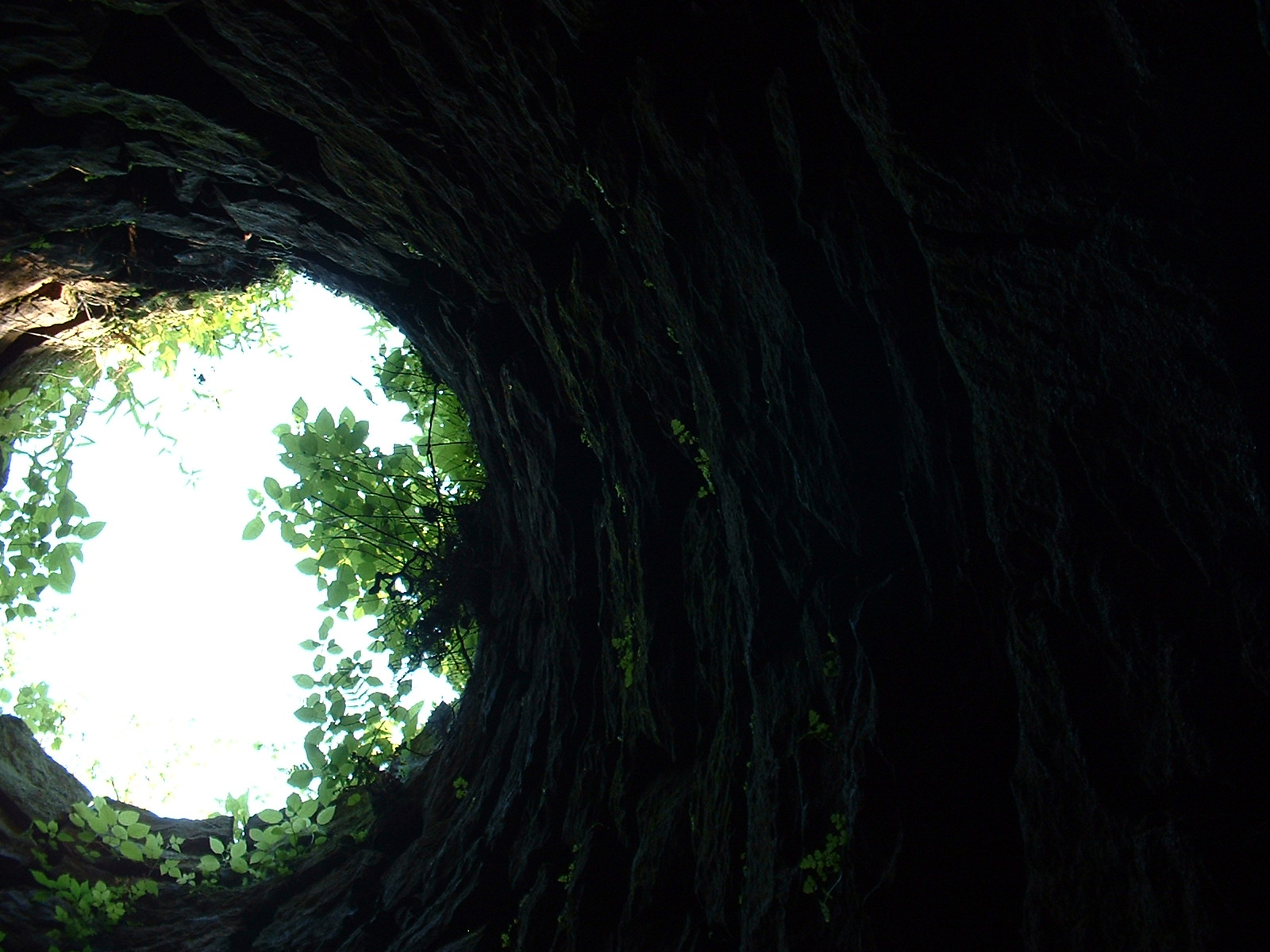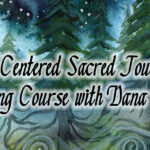Seven years ago, one of my closest friends, Alfred Struble, lost his 3-year battle with cancer, dying before he was even 30 years old. While I have long since accepted his passage from this world into the otherworld, I find that the anniversary of Alfred’s passing is a good day to reflect upon the cycles of life and death.

Since coming to druidry and embracing an animistic worldview, death has taken on new meaning to me. The Christian worldview, the religion of my birth, teaches that we are imperfect, sinful beings always striving to reach the state of ultimate happiness (heaven) through salvation from ourselves and our own human natures. This view assumes a “one-shot” attempt at life; a linear progression from nothingness, to something faulty, to something eternal. But this path, from birth to salvation, doesn’t really reflect any other cycle or path in real life (except if you were to believe that every life only has one opportunity on this earth to live). The more that I considered this path, when I was still within a Christian worldview, the more it made little sense to me.
I like to look to the patterns of nature to explain life and death. There are several worth bearing mention here:
1) The pattern of no waste. If you look at a forest, it’s a perfect system. Life gives way to death, which is then used to foster more life. Nothing in a forest is wasted, and everything is recycled—air (from oxygen breathers to oxygen makers); dirt (living plants consume the energy from dead ones); water (streams, rivers, water trapped by rich hummus in the soil, the trees forming as a canopy to keep the moisture contained within). If we look at our planet, it too is a perfect system. The process of photosynthesis forming the basis of plant life, which is then fed upon by animal life, which, when it dies, nourishes the plant life.
Nowhere, in any natural system, is the idea of “waste” generated. Everything in a natural system has a purpose—everything fits. What then is the place of spirit or soul in this system? Does it, too, go through a recycling/rebirth?
2) For the second principle, we come to Isaac Newton, who claimed that matter can be neither created or destroyed. If we accept the basic principles of law of the conservation of energy, this also provides us some insight into life and death. Does this same law apply to non-material things? Like souls and spirits?
If the universe is a perfect system, a system that doesn’t produce waste; and if energy can be neither created nor destroyed, does this suggest the recycling or renewal of our souls?
3) In nature, we see a cyclical pattern everywhere. From the wheel of the year where we mark the passage of the seasons to the cycles of water, of air, and of plant and animal life, we see that everything passes in a cycle that is connected to the whole. It seems that even if the matter does not stay in the same form (ice to water to gas), something about its essence is preserved (in the case of water the atomic building blocks of water remain).
Can this same cycle be applied to the soul?
4) Finally, we can look to evolution to see why a one shot path seems inconsistent with the patterns in nature. Recently, I was able to attend a talk by Richard Dawkins, who was talking about his new children’s book The Magic of Reality (which is an amazing read!). At the beginning of his talk, Dawkins presented a view of evolution that was so insightful, it bears repeating here. He argued that if you look at the short scale, say of only a few generations, there appears very little or no change between you, your parents, your grandparents, your great grandparents and so on. But each generation changes a little tiny bit, and if you went back far enough and widened your scope, you would eventually get back to something that looked nothing like you or your current generation. He then displayed a graphic that went back 40,000 generations, leading to a rather hideous fish-looking thing. His point was that evolution is slow, and many successive generations refine and adapt and grow to something greater.
Does evolution only happen, again, with living organisms? What about the spirit, the soul of such organisms? Can our souls evolve, grow, learn, and adapt just as our own species has done?
Concluding Thoughts – The Web of Life and Cycles of Rebirth
Some modern animist thinkers describe this as a great web of life—each node, an individual life, and the strands going out in millions of directions, connecting us to each other. When one passes on, he/she is reabsorbed into that great web, and within time, forms a new node. Is that node like the last? Likely not. Its evolved, its grown, and the cycle continues.
In the end, everything that I’ve written is philosophy. But I’d like to think that nature teaches us lessons—and these lessons can be applied to our understanding of and interaction with the otherworld.

- Our lives are but a small fraction of the whole!
[ This blow post will be in the Oct 1st 2013 Animist Blog Carnival]



Looking from the point of view of just the material aspects of body: a body is the food to the earthworm, the earthworm to the robin, the robin to the eagle, the eagle to the crow, the crow to a fox, the fox to the grass, the grass to a cow, the cow to a human child… your body will scatter across the world and the cosmos, being part of multiple living things from trees, to people to spiders.
My knowledge is reasonable of Celtic and Druid philosophy, and in that philosophy you probably know that a Celt considered death to be like half time in a soccer match, which he went onto a new body. There is good evidence (James Leininger) of reincarnation from children remembering past lives.
You may be aware of the Voyage of Bran son of Febal, a highly symbolic tale that addresses how the Druids saw the otherworld.
Yes, I was just reading about Bran of Febral recently :). I didn’t want to bring the Celtic views into this post (although it would certainly fit!)–that’s material for a dozen other posts, haha.
I really wanted to focus on the natural processes that may support reincarnation. Thanks for the comment!
Life is one shot,we were created by God! We did not evolve from slime! It is like saying you picked up a bunch of cells and threw them on the ground and a perfectly formed,living frog appeared. It takes more faith to believe in evolution than it does to believe in creation! The universe,our earth,our bodies are to complex for chance or coincidence.Are sure what you believe? What else in life is more important than knowing for sure! Investigate for YOURSELF!
I really don’t know what your post has to do with my friend’s death, and honestly, its kind of rude to post such a thing in a post that honors a passing friend. But since you’ve posted, I’ll give you a response–and only one.
Unfortunately, scientific consensus begs to differ with your views. The nice thing about beliefs is that you don’t have to prove them–that’s what faith is all about. Within the realm of science, however, objective measures of reality are important and allow us to validate how we understand the world. This same scientific method that evolutionary biologists, linguists, geologists, and the like use to examine evidence is the same method that discovers new stars and the same method that develops new cures for heart attacks and other diseases. There is no great conspiracy among scientists to discredit religious teachings. There is simply the scientific method, a rigorous peer review process, and a lot of people working to contribute to human understanding (I know this well, I am a learning researcher myself, and while I work within the realm of social science and educational research, the principles are the same). The fossil records, carbon dating, studies of the morphology of species, and much more all point to evolution as the most likely way in which human life developed.
I would actually suggest that you take your own advice and investigate it for yourself. You might find David Sloan Wilson’s work particularly helpful and accessible.
I would really like to include this in the Oct 1st Animist Blog Carnival, the theme is Death and the host is Moma Fauna at Pray to the Moon. Contributors just do this:
ABC Contributor Guidelines
1.Write an essay, poem, memoir, conduct an interview, etc about the month’s theme. Or film a song or photograph an image or art piece that is about the theme. You can contribute old writing/art.
2. Post on your blog with a link to the month’s hosting blog and a link to the ABC HQ. http://lifthrasirsuccess.wordpress.com/animist-blog-carnival/
3. Send link to your post to that month’s host by the last of the month. http://moma-fauna.blogspot.com/p/who.html
For more info, http://lifthrasirsuccess.wordpress.com/animist-blog-carnival/
I really like your blog and cannot believe I didn’t see it earlier!
Sure! Do you want me to revise it for your blog?
Great!!! If you could add a line at the end or beginning saying something like “This is part of the Animist Blog Carnival, hosted Oct 1st by Moma Fauna at Pray to the Moon, who picked the theme death.” and put links to the ABC page and Pray to the Moon,it would be great. Moma Fauna is hosting that month, so her blog will on Oct 1st have a list of posts about Death that are animist related with snippets of them so readers can visit the different blogs and their essays/poems/art/videos/photos. If you want to contribute to the ABC in the future Nov 1st theme is Human Mating and Dating (animist perspective) and Dec 1st is Animism & Other Religions, both hosted by me. January the blog naturebum is hosting the theme Trees. I’m always looking for contributors, so please tell anyone animystical (I just made that word up!) they are welcome to join in as well. Diversity is very important! WE are creating modern animism! Also people are always welcome to pick a month and theme to host on their blog and tell me, the organizer about it. Thanks!
Hi! This will be in the Oct 1st ABC! Please have a link on this essay saying it is part of the animist blog carnival with the URL http://lifthrasirsuccess.wordpress.com/animist-blog-carnival/ It goes live the 1st at Eaarth Animist!
Willowcrow, for my safety could you remove the mail address? Thanks! Great job on the ABC!
Removed in your post above. And I posted the link here :). Thank you!
THANK YOU – everyone loved your piece!Yay! More more more from you! animistblogcarnival (at) gmail (dot) com for the future submissions I host. Email that address and I’ll put you on the mailing list!!! I am so happy to have found your blog!
animistblogcarnival (at) gmail (dot) com for the future submissions I host. Email that address and I’ll put you on the mailing list!!! I am so happy to have found your blog!
Not only is this a beautiful sentiment it has also been very enlightening and informative in many ways,thankyou so much for this beautiful humbling read.
You are most welcome. Thank you so much for reading!